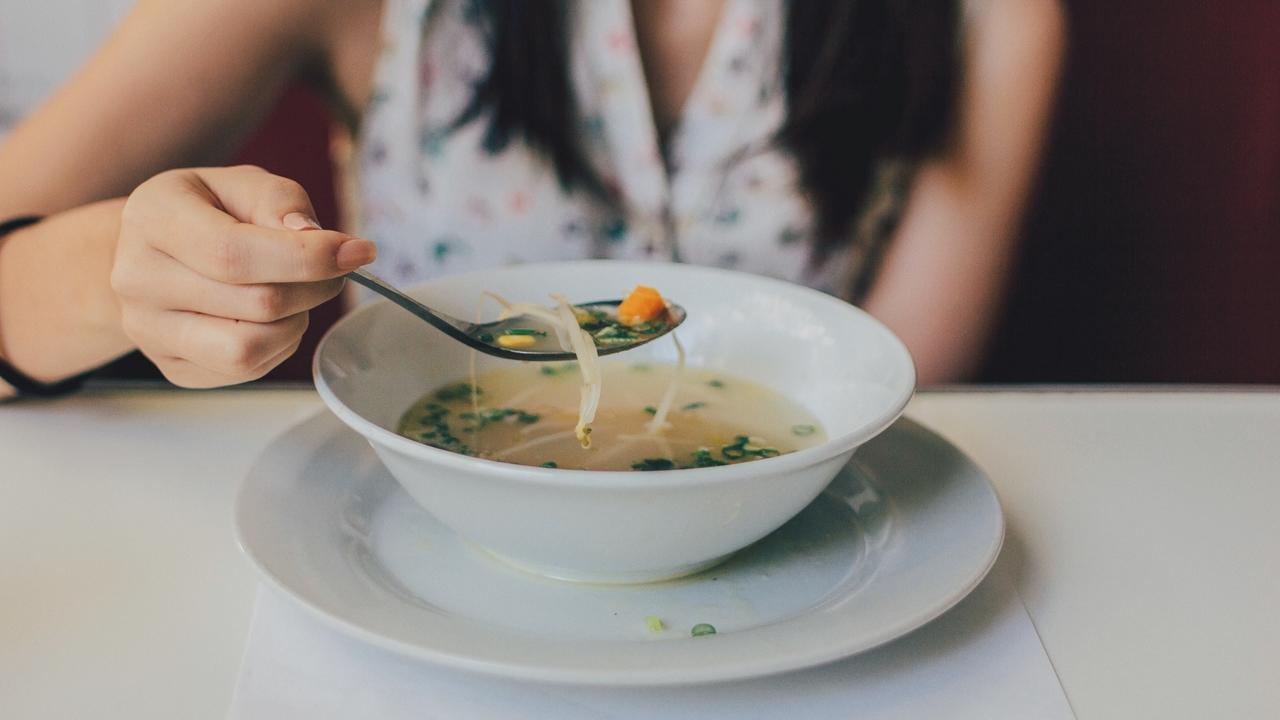Bone Me Up, Scotty!

Bone broth is a staple in my kitchen; I always have a tub of it in the refrigerator and use it almost daily.
This healing broth is more to me than soup, and although it is a quick snack to satisfy your hunger pains, it’s actually a wonderful elixir that helps heal my gut and guards me against getting sick. Making bone broth a part of your regular daily life helps tremendously with energy levels and digestion, especially if you have an autoimmune disorder like I do.
By the way, I do not mean the cartons of broth you buy at the grocery store. In order to have a good healing bone broth, you need to make your own. I understand that’s easier said than done, so I’m here to take you through the entire process from start to finish.
The nutritional benefits of bone broth are substantial and your bowl of bone broth contains a healing helping of glucosamine and chondroitin sulfate, which work together to reduce inflammation, joint pain, and other symptoms of arthritis. It is also excellent for digestion (it will do wonders for your gut), and it will also aid your nervous and immune systems and help your muscles grow and repair.
Bone broth will also give you a huge boost of minerals, including calcium, phosphorus, potassium, and magnesium and it is also rich in proline, glycine, and amino acids so that bone broth further helps to prevent bone loss while building healthy hair, nails, and skin.
Knowing that bone broth is so good for you, let’s get into the nitty-gritty.
Jump On Those Bones!
A local butcher and many stores can become your source for a variety of bones, and you can use bones from any animal as long as it was a good, healthy one. I prefer locally sourced bones, organically grown if possible, or at the very least, grass-fed. Do not use factory-farmed animals—they aren’t going to result in a nutritious broth. (Hint: If you can’t source good bones locally, buy bones online from US Wellness Meats).
Be mindful that the flavor of your broth will change based on the kind of animal you use, but it’s OK to mix your bones. And the absolute best bones are marrow bones. You also want big bones like knuckles, which contain cartilage. That means more collagen, which means a healthier broth.
How To Make Bone Broth
The best flavor for me comes from first roasting your bones, which I do by placing the bones in a pan in a 350-degree oven for one hour or so. When they are roasted they will be aromatic and browned, and you can then move them to your slow cooker with some salt, pepper, onion, celery, carrots, herbs, and several cloves of garlic, and then cover with water to the limit of your container. For herbs, I generally use ½ a package of fresh Thyme and Rosemary. Add a couple of tablespoons of apple cider vinegar so that the minerals and nutrients can be leached from the bones, then cook on low for at least 8 hours for poultry, 12 for beef. I tend to go much longer, up to 72 hours. You’ll need to replace the water from time to time, so the crock cooker is filled almost to the top.
When the broth has cooked as long as you need it to, strain the broth and let it sit in the fridge until the fat hardens on the surface. Spoon off the fat in the morning and if you’ve done it just right, the broth should be good and gelatinized.
Go For The Jiggle
If your broth doesn’t gel in the refrigerator, you might have added too much water for the amount of bones used, or perhaps you didn’t cook your broth long enough or too vigorously. Remember, the larger the bones, the longer they will need to cook! Also, they need connective tissue—that’s where the gelatin is some bones with joints are helpful. That’s why I LOVE chicken feet! (Yes, chicken feet can look and seem gross, but they produce the most magnificent, delicious gelled bone broth!) I buy my chicken feet at Whole Foods and use 2 packages for each batch of about 5 quarts of liquid.
You’ve got your jiggle on so what’s next? What do you do with that healing elixir?
Heat it up and drink it from a mug like you would a cup of coffee. This is a great way to start the day! I also make soup from my broth, and I use it in recipes calling for stock. My aim is to consume about 8 ounces of bone broth per day (more during flu season because of the immune boost it gives me), which really isn’t that difficult. As a drink, I usually zing it up a notch with a squirt of Sriracha Hot Chili Sauce and a wedge of lemon or lime. YUM!
Storing Bone Broth
Although I have kept a batch in the refrigerator for up to a week or so, you should use up your broth within 3 or 4 days. If you need longer than that, move it to the freezer where it will keep there for up to a year.
A great kitchen hack is to freeze some of your bone broth in an ice cube tray so you always have some on hand when your recipe calls for a little bit of stock! (2 cubes for recipes calling for 1/4 cup, 4 cubes to the 1/2 cup).

